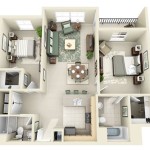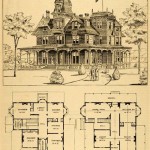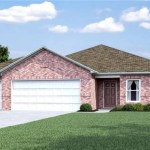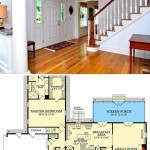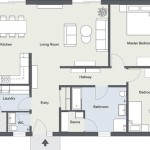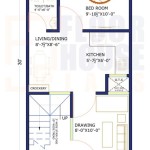Unique Ranch Style Home Plans: Exploring Architectural Variations and Modern Adaptations
Ranch style homes, known for their single-story layouts and expansive footprints, have maintained enduring popularity in residential architecture. These homes, initially characterized by their simplicity and affordability, have evolved significantly over time. Contemporary interpretations incorporate diverse design elements, offering a wealth of unique ranch style home plans that cater to varied lifestyles and aesthetic preferences. Understanding the key characteristics, historical influences, and modern adaptations of ranch style architecture provides valuable insight for prospective homeowners seeking to build or renovate a dwelling that combines functionality with distinctive design.
The ranch style, originating in the American West during the 1930s, drew inspiration from the open layouts and horizontal lines of traditional Spanish colonial architecture. The emphasis was on practicality and ease of living, making it a suitable choice for families and individuals seeking a comfortable and accessible home. Early ranch homes typically featured low-pitched roofs, attached garages, and large windows that brought natural light into the interior spaces. The floor plans were generally open and informal, promoting seamless transitions between living areas.
As the ranch style gained widespread acceptance, variations began to emerge, reflecting regional influences and evolving trends in architectural design. These variations contributed to the diverse range of unique ranch style home plans that exist today. From sprawling California ranches to more compact suburban models, the ranch style adapted to meet the changing needs and preferences of homeowners across the country. Exploring these different types of ranch homes provides a comprehensive understanding of the style's versatility.
Key Characteristics of Ranch Style Homes
Several defining characteristics distinguish ranch style homes from other architectural styles. These elements are often incorporated into unique ranch style home plans, albeit with contemporary twists and modern interpretations. Recognizing these features is essential for identifying and appreciating the enduring appeal of ranch style architecture.
One of the most prominent features of a ranch home is its single-story layout. This design eliminates the need for stairs, making it an accessible option for people of all ages and abilities. The horizontal orientation of the structure emphasizes the connection to the surrounding landscape, fostering a sense of spaciousness and openness. The low-pitched roofline, often with wide eaves, further contributes to the horizontal aesthetic, creating a visually appealing and understated profile.
Large windows and sliding glass doors are another hallmark of ranch style homes. These architectural elements maximize natural light and provide seamless transitions between indoor and outdoor living spaces. The abundance of natural light enhances the interior ambiance, creating a bright and welcoming atmosphere. The integration of outdoor spaces, such as patios and decks, further extends the living area, promoting a relaxed and informal lifestyle.
Attached garages are a common feature in ranch style homes, reflecting the importance of automobiles in mid-century American culture. The garage is typically located at the front or side of the house, providing convenient access for residents. The integration of the garage into the overall design adds to the functionality and practicality of the ranch style home.
Simple floor plans characterized by open living areas are also typical of ranch designs. Kitchens often flow directly into dining and living spaces, creating a connected and social environment. Bedrooms are usually grouped together in a separate wing of the house, providing privacy and separation from the main living areas. This functional layout contributes to the overall efficiency and livability of the ranch style home.
Exploring Variations in Ranch Style Home Plans
Within the broader category of ranch style homes, several variations exist, each with its own distinct characteristics and regional influences. These variations reflect the adaptability of the ranch style and its ability to evolve over time. Understanding the different types of ranch homes provides a comprehensive perspective on the diversity of unique ranch style home plans.
California Ranch homes, often considered the quintessential ranch style, are characterized by their sprawling layouts, low-pitched roofs, and abundant use of glass. These homes typically feature large patios and courtyards, seamlessly connecting indoor and outdoor living spaces. The California Ranch style emphasizes a relaxed and informal lifestyle, reflecting the sunny climate and outdoor culture of the region.
Suburban Ranch homes, also known as "ranch burgers," are a more compact and affordable version of the ranch style. These homes were often built in large-scale suburban developments during the post-World War II era. Suburban Ranch homes typically feature smaller floor plans, simplified designs, and less emphasis on outdoor living spaces. Despite their modest size, these homes provided a comfortable and affordable option for growing families.
Split-Level Ranch homes, a variation that emerged in the 1950s and 1960s, feature multiple levels connected by short flights of stairs. This design allows for the efficient use of space on smaller lots, while still maintaining the horizontal aesthetic of the ranch style. Split-Level Ranch homes often have a partially sunken living room or family room, creating a distinct separation between living areas.
Raised Ranch homes, another variation that gained popularity in the mid-20th century, feature a raised foundation that provides additional living space. The lower level of a Raised Ranch home is often partially below ground, allowing for the creation of a finished basement or additional bedrooms. This design provides a cost-effective way to increase the square footage of the home.
Modern Adaptations of Ranch Style Architecture
In recent years, there has been a renewed interest in ranch style homes, with many architects and designers incorporating modern elements into traditional ranch designs. These modern adaptations create unique ranch style home plans that blend the best of both worlds, combining the comfort and functionality of the original ranch style with contemporary aesthetics and energy-efficient features.
One of the most common modern adaptations is the incorporation of open floor plans that seamlessly connect living, dining, and kitchen areas. This design creates a spacious and airy atmosphere, promoting social interaction and enhancing the overall livability of the home. Large windows and sliding glass doors continue to be a key element, maximizing natural light and providing access to outdoor spaces.
Energy-efficient features are also increasingly integrated into modern ranch style homes. These features include solar panels, energy-efficient windows and insulation, and smart home technology that helps to reduce energy consumption. Sustainable building materials, such as recycled wood and bamboo flooring, are also often used in modern ranch designs.
Contemporary materials and finishes are also used to update the look and feel of ranch style homes. These materials include sleek metal roofing, concrete floors, and minimalist cabinetry. The use of natural materials, such as wood and stone, helps to create a warm and inviting atmosphere, while still maintaining a contemporary aesthetic.
Universal design principles are often incorporated into modern ranch style home plans, making them accessible and adaptable for people of all ages and abilities. These principles include wider doorways, roll-in showers, and lever-style door handles. The single-story layout of the ranch style makes it inherently accessible, but incorporating universal design principles ensures that the home will remain functional and comfortable throughout the homeowner's life.
Unique ranch style home plans offer a wide range of possibilities for homeowners seeking a blend of comfort, functionality, and distinctive design. By understanding the key characteristics, historical influences, and modern adaptations of ranch style architecture, prospective homeowners can create a dwelling that reflects their individual needs and aesthetic preferences. The enduring appeal of the ranch style lies in its ability to adapt and evolve, remaining a relevant and desirable choice for generations to come.

Ranch Style House Plan 5 Beds 3 Baths 3821 Sq Ft 60 480 Floor Plans

Ranch House Plans Style Home Designs The Designers

Trending Ranch Style House Plans With Open Floor Blog Eplans Com

Ranch House Plans Style Home Designs The Designers

Marriott Contemporary Home House Plans Ranch Style

Ranch House Plans Floor Cool

Cool Ranch Style Homes For 2024 Blog Eplans Com

Tierney Ranch House Plans Luxury Floor

Open Concept Ranch Floor Plans Houseplans Blog Com

What To Look For In A Ranch Style House Plan Sater Design Collection


